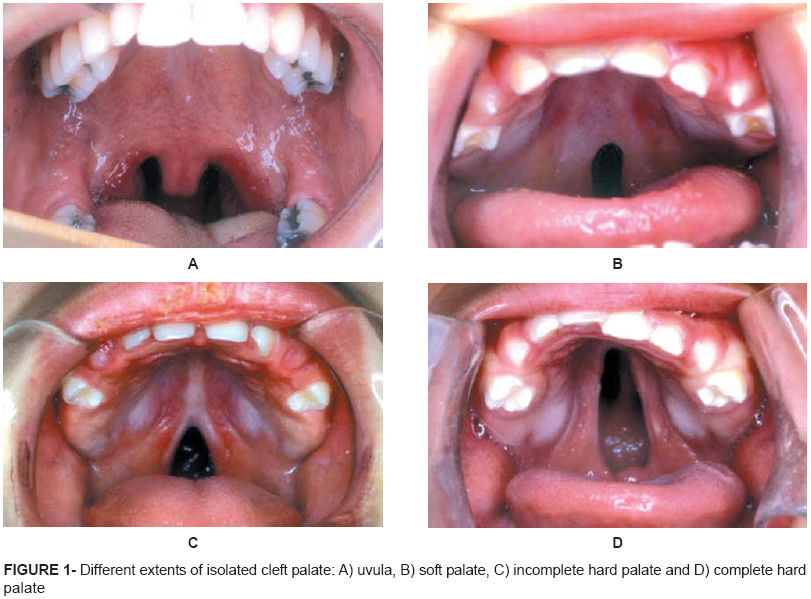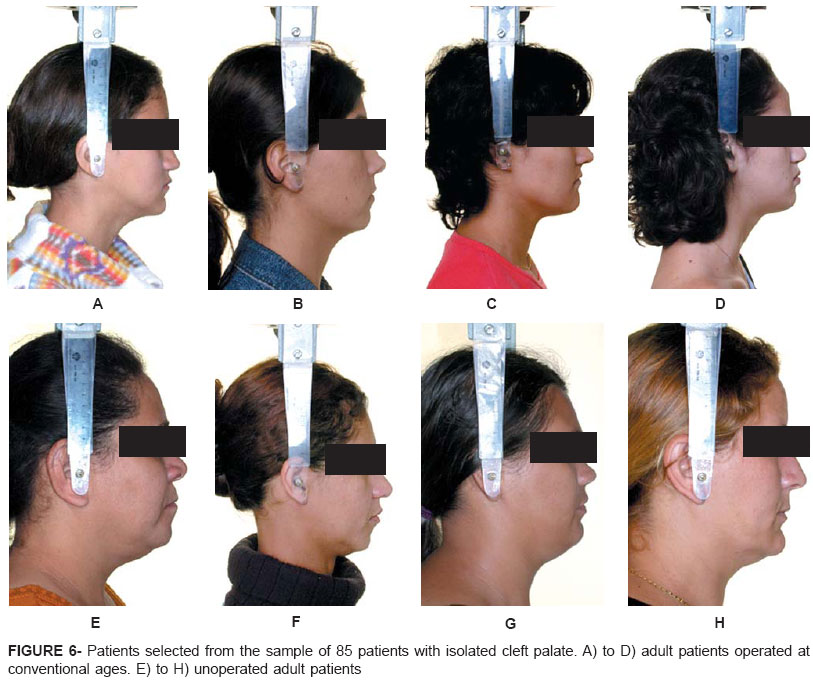INTRODUCTION: The literature has demonstrated that alterations in craniofacial morphology characterizing individuals with cleft palate are observed in both operated and unoperated patients. OBJECTIVE: This study evaluated the influence of isolated cleft palate and palatoplasty on the face, based on facial analysis. MATERIAL AND METHODS: Lateral facial photographs of the right side of 85 young adult patients with cleft palate were analyzed, of whom 50 were operated on and 35 had never received any previous surgical treatment. The nasolabial angle and zygomatic projection were used to define the maxillary position in the face. Mandibular positioning was classified as Pattern I, II and III. RESULTS: Patients were distributed into 54.12% as Pattern I, 32.94% Pattern II and 12.94% Pattern III. Distribution of facial patterns did not show statistically significant differences between groups (p>0.05). Although palatoplasty did not influence the facial pattern, the zygomatic projection was vulnerable to plastic surgeries. Twenty-eight percent of the patients in the operated group showed zygomatic deficiency, compared to only 8.5% in the unoperated group. CONCLUSIONS: In patients with isolated cleft palate, palatoplasty may influence negatively the sagittal behavior of the maxilla, according to the zygomatic projection of the face, though without compromising the facial pattern.
Cleft lip; Cleft palate; Surgery; Face










